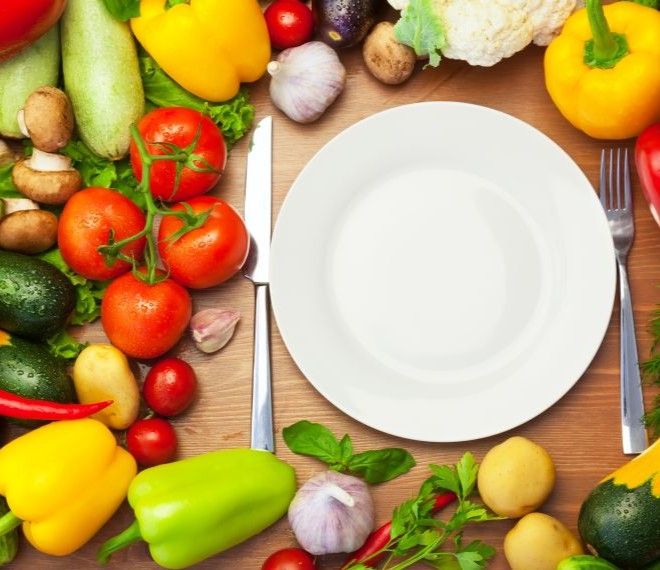How to put together our meals correctly?

Ideal meals should include all three main nutrients: protein, fat, and carbohydrates.
The distribution of our daily energy intake should be approximately 20-25% for breakfast, about 30% for lunch, and 20% for dinner, with snacks making up about 10-15%.
Special emphasis should also be placed on the distribution of nutrients. For breakfast and lunch, an ideal distribution would be 40-45% carbohydrates, 20-25% fats, and 30-35% proteins, while for dinner, it's recommended to reduce carbohydrate intake to about 35%, fats to 25%, and increase proteins to 40%.
The first meal of the day should ideally be breakfast. It's advisable to consume it within 1-1.5 hours after waking up. If mornings are rushed, prepare your breakfast the night before to save time. When it comes to carbohydrates, it's beneficial to choose sources rich in fiber that are absorbed slowly, even if you don't suffer from carbohydrate metabolism disorders. This ensures a feeling of fullness and achieves stable blood sugar and insulin levels.
Conversely, choosing refined, sugared bakery products with low nutritional value can lead to rapid spikes in blood sugar and insulin levels. The downside is that they don't fill you up properly, leading to a quick drop in blood sugar levels, resulting in hunger and concentration problems, which can negatively affect performance at school or work.
For protein sources, you can choose from both plant-based and animal-based foods, while fats should primarily come from plant-based sources. Fresh vegetables or a small amount (1 piece) of fruit should be a constant part of your breakfast if you don't have carbohydrate metabolism disorders.
Examples of ideal breakfasts include a sandwich with vegetables on whole grain bread; omelet made with zucchini and oatmeal; oatmeal with fruit and 100% nut butter; yogurt with seeds and sugar-free granola; green pea cream on whole grain bread with vegetables, etc.
When it comes to lunch, avoid extreme distributions of nutrients. Consuming a salad or a fat-rich meat dish with a fat-rich side dish will not achieve the desired effect.
If lunch is low in carbohydrates, you won't ingest enough energy for the remaining tasks of the day, while a fat-rich meal guarantees the feeling of a "food coma" and a lack of certain nutrients.
Lunch should always include protein and fats along with higher fiber, complex carbohydrate sources (e.g., bulgur, millet, quinoa, basmati rice, etc.), as well as fresh salad / variedly prepared vegetables / pickles. Using these ingredients, a filling, nutritious salad can be prepared. If you struggle to consume the daily minimum of 2 liters of fluid, consider complementing the main meal with a low-calorie soup. As a final dish, a few bites of dessert are allowed, preferably choosing a nutrient-rich version.
Examples of ideal lunch dishes include vegetable soup, chicken skewers with tzatziki salad and bulgur; chickpea patties with pumpkin stew; salmon with roasted vegetables and potatoes; meatballs in tomato sauce with durum spaghetti, etc.
For dinner, try to avoid making it the most energy-rich meal of the day. Ideally, dinner should be consumed at least 2 hours before bedtime.
A good dinner is not too taxing on the digestive system but is satisfactorily filling. Good sleep can be supported with foods rich in tryptophan (an amino acid) since it is converted into the hormone melatonin, which regulates sleep. Foods rich in tryptophan include high-protein sources like chicken, eggs, cheese, fish, milk, peanuts, tofu.
Try to avoid carbohydrate-rich dishes for dinner. Prefer dishes rich in vegetables, such as stuffed/baked vegetables. Always complement the dish with fats and a protein source. For plant-based sources, it's advisable to consume less bloating options for dinner.
Examples of ideal dinner dishes include grilled cheese with beetroot risotto; stuffed zucchini; layered vegetables; whole grain wrap with avocado and chicken, etc.
Prepared by:
Vivien Kitti Kovács-Nagy, Dietitian
